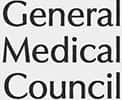
Gynecomastia is a condition common among boys and men. It is characterised by enlarged breast tissue, either on one side or both. As a result, people with gynecomastia can experience physical and psychological strain. Understanding the symptoms and causes can help in deciding on treatment options. In many cases, gynecomastia can be treated non-surgically, but surgical options are available. We’ll discuss in more detail the symptoms and causes of gynecomastia and the various treatments available.
The symptoms of gynecomastia may differ from person to person. The most prevalent sign is the enlargement of breast tissue but it’s worth consulting a GP if you notice any of the following alongside enlargement:
One of the most common concerns men face is determining whether they have gynecomastia or simply chest fat. Here are the key differences:
Physical examination and diagnostic imaging can help differentiate between the two. Lifestyle changes like exercise and weight loss may help reduce chest fat but are unlikely to resolve gynecomastia.

The reason gynecomastia is common among men is because of testosterone, or more accurately, the imbalance of this naturally occurring hormone. Men make testosterone during puberty alongside a small amount of estrogen, which is the female hormone.
When the ratio of testosterone to estrogen shifts, either due to reduced testosterone production or increased estrogen levels, it can lead to the development of gynecomastia. Age, medication, or underlying health conditions can contribute to this hormonal imbalance. Understanding these triggers is key to managing the condition effectively.
This imbalance can occur at various life stages. For example:
Understanding these causes is essential for addressing gynecomastia effectively. Identifying the root cause will guide treatment options, whether through lifestyle adjustments, medication, or surgery.
Certain drugs and medications can also contribute to gynecomastia. A study in 2012 found that 20% of gynecomastia in men in the USA was due to drug use. Although this is an older study, as the number of people using both prescription and recreational drugs continues to rise, the prevalence of drug-induced gynecomastia also increases.
This trend underscores the importance of monitoring medication and substance use as potential contributors to the condition. Some of the most common drugs that cause the condition include:
When non-invasive treatments fail to provide relief, surgical intervention is often the most effective way to address gynecomastia. Surgical procedures focus on removing excess glandular tissue, fat, or skin to restore a more masculine chest contour. Here are the main surgical options available:
Liposuction is a minimally invasive procedure that targets excess fat in the chest area. This is often suitable for men with pseudogynecomastia, where fat deposits are the primary concern.
Key Details:
While liposuction is effective for fat removal, it does not address glandular tissue, making it less suitable for true gynecomastia cases.
Excision surgery is a popular method for treating gynecomastia caused by glandular tissue growth. This procedure is also used in cases involving excess skin or when the nipples need repositioning for a more natural appearance.
Procedure Overview:
Recovery from excision surgery is slightly longer than liposuction, but the results are typically more dramatic and permanent.
For many patients, a combination of liposuction and excision offers the best results. This approach addresses both fat deposits and glandular tissue, ensuring a smooth, natural-looking contour.
Who Benefits Most:
Combination surgery allows surgeons to perform the procedure to the patient’s unique anatomy, providing the most comprehensive solution.
Your doctor will give you thorough instructions unique to your needs and procedure. It’s always best to follow the advice carefully, this could impact both the success of your surgery and the recovery time. Here is what to expect when considering surgery:
Before Surgery:
After Surgery:
Surgical options provide long-lasting and often life-changing results for men struggling with gynecomastia. While non-surgical methods can help in some cases, surgery is often the most reliable way to achieve a flatter, more sculpted chest.
Gynecomastia surgeries with the NHS are not always a guarantee. Under some circumstances, it is offered if the condition is caused by underlying or long-term conditions. Other criteria include:
If you are eligible for gynecomastia surgery with the NHS you will need to consult with your GP and they will give an assessment.
As a common condition, there are options beyond surgery for Gynecomastia. These vary from simple lifestyle changes to non-invasive medications and procedures. Usually, this is recommended or prescribed before surgical options.
For many, lifestyle adjustments can alleviate symptoms, particularly if gynecomastia is linked to weight gain, substance use, or medications. Common changes include:
In cases where lifestyle changes aren’t enough, non-surgical treatments may be effective:
Surgery is often the last stage for men with gynecomastia. Before you consider it you should explore all non-invasive procedures. This will provide better insight into the root cause and likely improve your health whether it’s through exercise, physiotherapy or removing harmful habits.
Bowman JD, Kim H, Bustamante JJ. Drug-induced gynecomastia. Pharmacotherapy. 2012 Dec;32(12):1123-40. doi: 10.1002/phar.1138. Epub 2012 Nov 16. PMID: 23165798







